The Flying Swiss Army Knife
Our Flight Adventure this issue highlights one of the most favoured short take-off and landing utility aircraft of the past 60 years: the Pilatus PC-6 Turbo Porter.
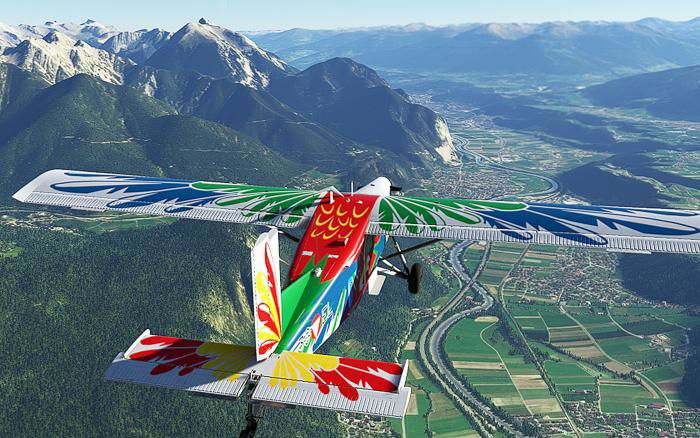
Swiss aerospace manufacturer Pilatus Aircraft has been in the aviation industry since 1939 when it first won a contract to service the aircraft of the Swiss Air Force. In the decades since, they have also turned to designing and manufacturing aircraft as diverse as short take-off and landing (STOL) aircraft, military trainers, gliders and more recently, a twin bizjet.
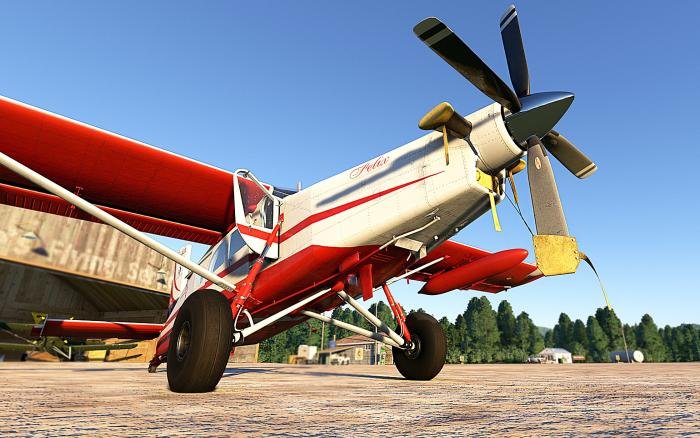
One such STOL model was the piston engine PC-6 Porter which first flew in 1959. While it didn’t take too long before it was also made available fitted with a turboprop engine, reliability issues prompted Pilatus to search for a more reliable powerplant. Arguably, one of the most significant changes was when the Pratt & Whitney PT6A turbine engine was fitted from 1996. This powerplant has a reputation of unrivalled reliability and performance and its addition has seen production of the PC-6 Turbo Porter continue right up to 2019. Pilatus has committed to continue to produce parts for at least 20 years, allowing the operators of the 300 remaining airframes to keep flying into the 21st century.
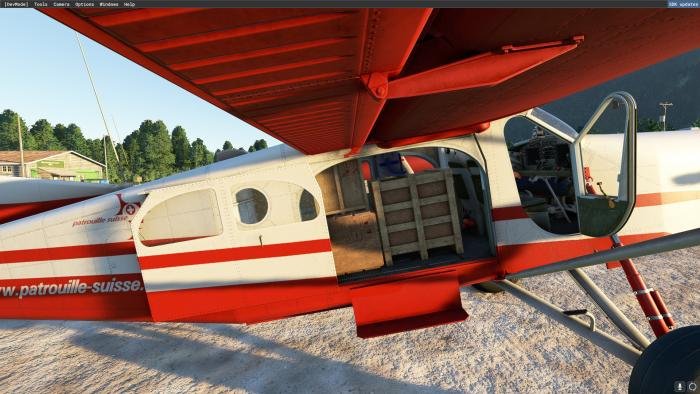
Your flights
Your job is to fly the PC-6 Turbo Porter in a couple of VFR roles that are all in a day’s work for a PC-6 pilot but possibly a little stressful for the rest of us! For this issue, we have selected the MilViz PC-6 Turbo Porter in Microsoft Flight Simulator (MFS). The MilViz PC-6 is also available in FSX and Prepar3D models, while X-Plane pilots should look at the Thranda DGS series PC-6 Turbo Porter. To complement this issue’s theme of airports, cities and scenery, we will also be highlighting scenery from Orbx Simulations Innsbruck (also available for P3D and X-Plane) and touching on the rapidly increasing scenery options for MFS, P3D and X-Plane in the wild backcountry of Papua New Guinea. Also, REX Simulations has supplied its Weather Force and Global Airport Texture products to complement our experience.
I also recommend you read the Pilot’s Notes which can be obtained in the downloads section for this issue as it lists a range of freeware additions and improvements that, when you’re not biting through your fingernails in panic, will further enhance your enjoyment and make the flights more immersive.
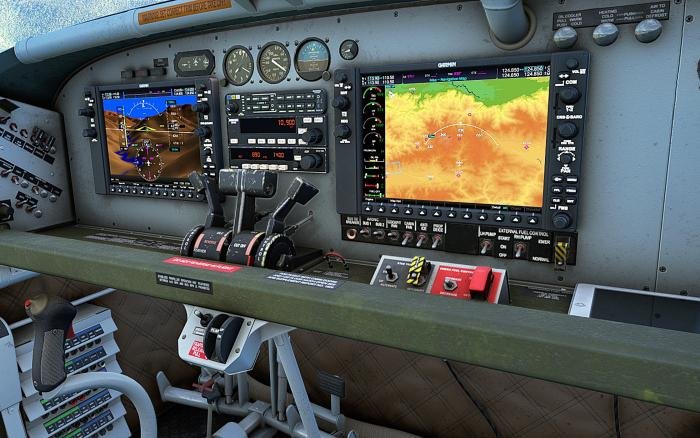
Skydive
With estimates that approximately 40% of PC-6 Porters operating in Europe are involved in skydiving operations, it is only fit we fly a couple of loads out of scenic Innsbruck/LOWI. Select a parking position on the northern GA side of the airport to avoid the regular public transport traffic. Load up with 10 skydivers (850kg/1,870lb) payload to simulate the skydivers, plus 50% fuel, which will be enough for a couple of runs including a 45-minute reserve.
After take-off, track straight ahead along the narrow Inntal valley. Once you reach 7,000ft, turn back towards Innsbruck so that you are cruising at 10,000ft as you fly over the airport. You can then reduce your payload to zero to simulate the rapid departure of your guests. As we start our descent back to Innsbruck, we can learn about a feature unique to the Porter.
It is the only aircraft in which the use of beta range is permissible in flight. By first slowing the aircraft and then moving the prop pitch to disc, the propeller creates a huge amount of drag. To maintain airspeed, you can then lower some flaps and pitch forward (sometimes alarmingly!) and maintain around 65-80 knots, which will give you a descent rate of around 2,000ft-plus per minute. The advantage of lowering flaps first is that you’ll maintain manoeuvrability as you rapidly descend towards the runway. These beta descents ensure that the aircraft has a quick turnaround time, enabling operators to get more payload (skydivers!) in a given time. As you approach the circuit height of 2,900ft AMSL, transition back to ‘normal’ range flight by increasing power and raising the nose before completing the landing to collect more skydivers. Repeat as many times as you feel lucky. Some additional scenic areas to drop payloads are suggested in the downloadable Pilot’s Notes.
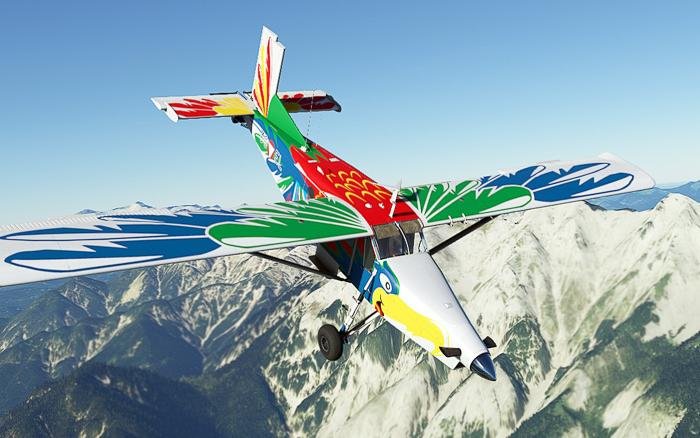
Backcountry supply
The Porter still holds an impressive record to this day after it carried several loads at maximum payload weight to 18,865ft (5,700m) up the Dhaulagiri glacier in Nepal in 1960. While our next flight won’t stretch our performance that hard, we will be flying to incredibly small airstrips in Papua New Guinea (PNG). There has been a recent surge of PNG airstrip add-ons for most flight sim platforms and there are plenty of choices. So rather than dictate your route, you can choose which area of PNG you wish to explore and install any relevant add-ons.

There are plenty of suggestions in the Pilot’s Notes and a search of file libraries and major developers such as Orbx will be sure to reveal one that appeals. Some platforms also offer Bush Trip add-ons that allow a more extended exploration of the PNG highlands in some detail. The accompanying screenshots were taken using the freeware Mega Pack 5 as well as the freeware Holgermesh PNG from Orbx. This example will allow you to depart the capital city of Port Moresby and fly to an area 20 minutes north which is dotted with a wide range of challenges.
The first realisation is that most of the ‘airstrips’ are nothing more than scratches in the jungle and are often ‘one-way’ strips. So, you must allow for the steep surrounding terrain, clouds that hide mountains and always land uphill and take off downhill. If your short take-off and landing skills require some honing before you embark on these trips, try flying from the regional airports of Goroka/AYGA, Lae/AYNZ or Mount Hagen/AYMH. Once you’re more comfortable handling the PC-6, you can then reach the central highlands airstrips very quickly.
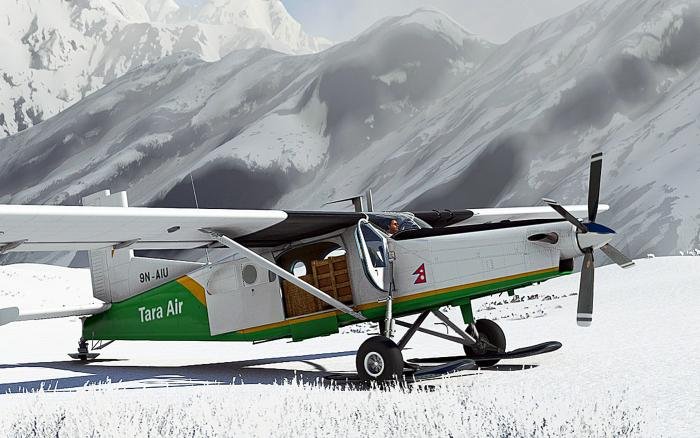
FACT #1
The Porter brings new meaning to the term short take-off and landing with it able to get airborne in just 640ft (195m) and land again in just 427ft (130m), while carrying a 2,646lb (1,200kg) payload. As a result, it has become a popular choice in regions of the world such as New Guinea where high mountains and very short airstrips are the norm.
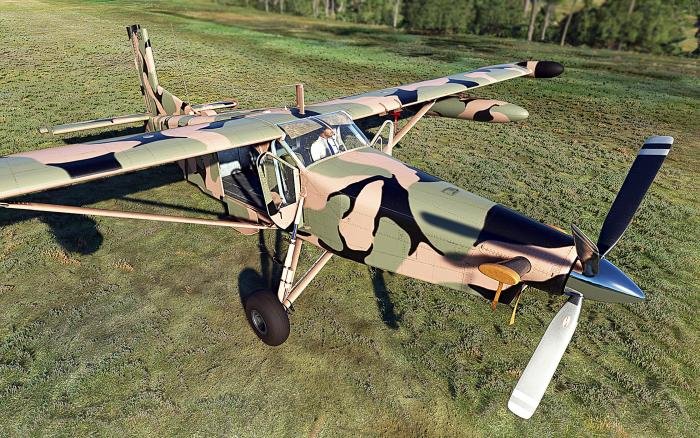
FACT #2
The PC-6 has flown on every continent on the planet as well as the north and south polar ice caps. It can be fitted with regular or tundra tyres, floats or skis as required. It has been used for every conceivable role including military, utility, air ambulance and reconnaissance. It holds the record for the most take-offs and landings in a 24-hour period when it completed 424 in 21 hours. It also holds a class altitude record for flying at 44,240ft (13,485m). It can most certainly claim it’s nickname of the Flying Swiss Army Knife.
FACT #3
Perhaps one of the stranger uses of the PC-6 (and the US-made Fairchild Hiller which was built under license) was by “Air America”, which was a bogus freight and passenger airline set up by the US CIA in 1946 to run clandestine operations in conflict zones across the world. With the Porters being such a rugged STOL design, they could fly into remote jungle clearings throughout Asia and Central America.
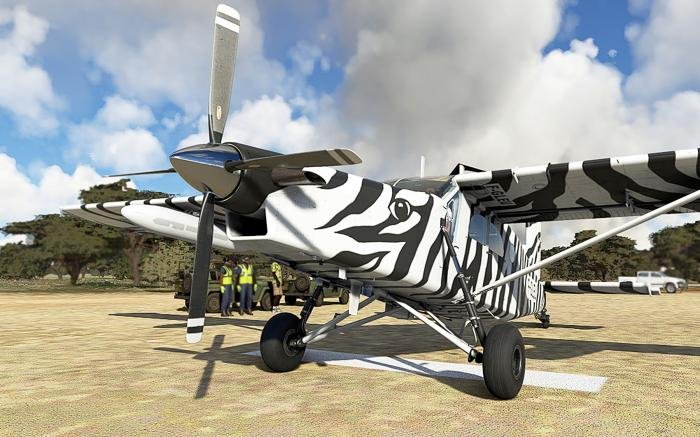
Craving for more?
The downloadable Pilot’s Notes also provide a bundle of suggestions, routes and landing grounds in PNG for all major flight simulation platforms where the PC-6 and similar aircraft still provide a lifeline to remote highland communities.
By Peter Stark

